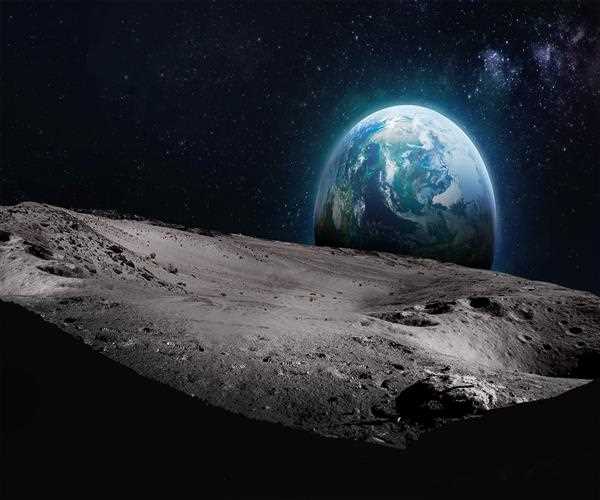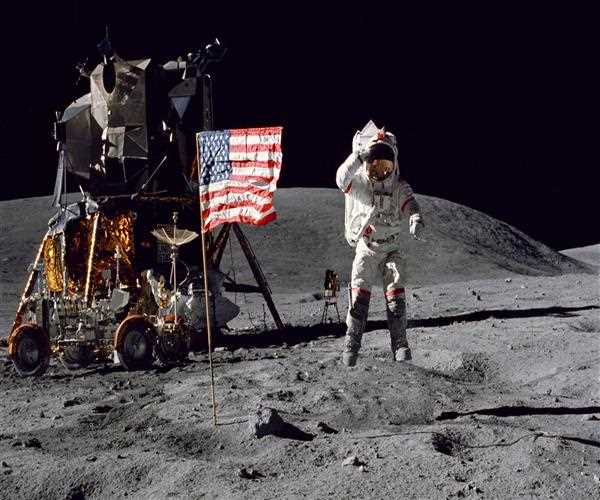Search here

06-Jul-2023 , Updated on 7/6/2023 5:01:46 AM
Trends of the Space Race and the Moon Landing: Exploring New Frontiers
Highlights
- The space race was a competition between the United States and the Soviet Union during the Cold War era (1955-1972) to achieve significant milestones in space exploration and demonstrate technological superiority.
- Sputnik 1: In 1957, the Soviet Union launched the first artificial satellite, Sputnik 1, marking the beginning of the space age and igniting the space race.
- Yuri Gagarin- In 1961, Yuri Gagarin became the first human to orbit the Earth, aboard the Vostok 1 spacecraft, further intensifying the space race.
- Mercury program- The United States responded with the Mercury program, which aimed to put an American astronaut into space. In 1961, Alan Shepard became the first American to travel to space.
- Apollo program- The United States initiated the Apollo program, with the goal of landing astronauts on the Moon. The program spanned from 1961 to 1972 and involved several manned missions.

- Apollo 11- On July 20, 1969, Apollo 11 successfully landed the first humans on the Moon. Neil Armstrong and Buzz Aldrin became the first and second persons to walk on the lunar surface.
The exploration of space has always captivated the imagination of humanity, and throughout history, nations have engaged in a fierce competition known as the "Space Race." One of the most significant achievements of this race was the historic moon landing in 1969. However, the trends of the Space Race have evolved over the years, with new players emerging and novel objectives taking center stage. Let's explore the trends that have shaped the Space Race and delve into the significance of the moon landing.
I. The Early Days of the Space Race
The Space Race officially began with the launch of Sputnik 1, the world's first artificial satellite, by the Soviet Union on October 4, 1957. This event marked the beginning of a heated competition between the United States and the Soviet Union to demonstrate technological superiority and assert dominance during the Cold War Era. The early trends of the Space Race were characterized by milestones such as Yuri Gagarin's historic orbit of the Earth in 1961 and the first American manned spaceflight by Alan Shepard in the same year.
II. The Moon Landing: A Historic Achievement
The pinnacle of the Space Race was undoubtedly the moon landing. On July 20, 1969, the Apollo 11 mission, led by astronauts Neil Armstrong, Buzz Aldrin, and Michael Collins, successfully landed the lunar module Eagle on the Moon's surface. Neil Armstrong's iconic words, "That's one small step for man, one giant leap for mankind," echoed across the globe, symbolizing humanity's triumph in exploring a celestial body beyond Earth.
The moon landing had a profound impact on science, technology, and society as a whole. It showcased the tremendous capabilities of human ingenuity, fostered international collaboration, and inspired generations to pursue careers in science and engineering. Moreover, the Apollo missions paved the way for further exploration of the Moon, setting the stage for future scientific endeavors.
III. The Shifting Landscape of the Space Race
Following the moon landing, the Space Race entered a new phase. The rivalry between the United States and the Soviet Union gradually gave way to a more collaborative approach, as space exploration became a shared goal for multiple nations. The signing of the Outer Space Treaty in 1967, which established principles for the peaceful use of space and prohibited the placement of weapons of mass destruction, exemplified this changing trend.
In the following decades, space exploration expanded beyond the Moon. The focus shifted towards scientific research, satellite deployment, and the utilization of space for commercial purposes. The emergence of new players in the Space Race, such as the European Space Agency (ESA), China National Space Administration (CNSA), and the Indian Space Research Organisation (ISRO), further diversified the landscape.
IV. The Dawn of New Objectives
The modern Space Race is characterized by a plethora of new objectives and trends. One of the most significant trends is the increasing importance of private space companies, led by industry giants like SpaceX, Blue Origin, and Virgin Galactic. These companies are actively involved in developing reusable rockets, exploring the potential for space tourism, and working towards establishing permanent human settlements on other celestial bodies.
Another trend is the renewed interest in manned missions to the Moon and the pursuit of deep space exploration. NASA's Artemis program aims to return astronauts to the Moon by 2024, in collaboration with international partners. Furthermore, plans for crewed missions to Mars are being actively pursued, with ambitious objectives of establishing a human presence on the Red Planet in the coming decades.
V. The Significance of the Moon Landing
While the Space Race has evolved over time, the significance of the moon landing remains unparalleled. It serves as a symbol of human achievement and perseverance, showcasing our ability to overcome challenges and push the boundaries of what is possible. The moon landing was not only a scientific and technological feat but also a testament to the power of collaboration and the unifying force of exploration.
The moon landing provided valuable scientific data and insights about the Moon's geology, atmosphere, and potential for future human habitation. The samples and data collected by the Apollo missions continue to be studied by scientists to this day, contributing to our understanding of the Moon's formation and evolution.
Moreover, the moon landing had a profound impact on society and culture. It sparked a wave of inspiration and wonder, capturing the collective imagination of people around the world. The achievement of landing humans on the Moon fueled the dreams of aspiring scientists, engineers, and astronauts. It demonstrated that with determination, innovation, and perseverance, we can overcome seemingly insurmountable challenges.
The moon landing also had geopolitical implications. At the height of the Cold War, it represented a symbolic victory for the United States over the Soviet Union, showcasing American technological prowess and establishing the U.S. as the leading spacefaring nation. It highlighted the importance of space exploration as a means of national prestige and soft power diplomacy.
In recent years, there has been a renewed interest in returning to the Moon, not only for scientific purposes but also for its potential as a stepping stone for further space exploration. The Moon has abundant resources such as water ice in its polar regions, which can be utilized for life support systems, fuel production, and as a potential launchpad for missions deeper into space. The moon landing served as a catalyst for envisioning a future where humans could establish a sustainable presence on the Moon and use it as a base for further exploration of the solar system.
The trends of the Space Race and the historic moon landing have shaped the course of human space exploration. From the early days of competition between the United States and the Soviet Union to the collaborative efforts of multiple nations today, the Space Race has evolved significantly. New players, such as private space companies, have emerged, and new objectives, like lunar missions and deep space exploration, have taken center stage.
The moon landing remains a pinnacle achievement, symbolizing human determination, innovation, and the unifying spirit of exploration. Its impact on science, technology, and society cannot be overstated. As we look towards the future, the lessons learned from the Space Race and the moon landing will continue to inspire and guide us as we venture further into the cosmos, pushing the boundaries of human knowledge and understanding.

Student
Economics can be broken down into microeconomics, which looks at individual decisions, and macroeconomics, which is concerned with the economy as a whole. Both types of economics utilize historical trends and current conditions to inform business decision-making and make predictions about how markets might behave in the future. Students who choose to study economics not only gain the skills needed to understand complex markets but come away with strong analytical and problem-solving skills.
Join Our Newsletter
Subscribe to our newsletter to receive emails about new views posts, releases and updates.
Copyright 2010 - 2025 MindStick Software Pvt. Ltd. All Rights Reserved Privacy Policy | Terms & Conditions | Cookie Policy